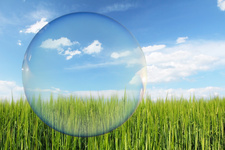A biosafety lab is a specialized research laboratory that deals with infectious agents. Some are designed for research, while others are performing some kind of production activity, but proper protection is of the utmost importance for the safety of everyone working in and around a biosafety lab. Protection is not only important for those working in a building with a biosafety lab, but also for the environment and the community around the laboratory.
The protection that is required for any biosafety laboratory is defined by what are known as biosafety levels. There are four levels, which are determined by the types of agents or organisms that the laboratory is working with. As the biosafety level increases, there are more requirements and constraints added to the necessary safety precautions that must be followed.
Biosafety Level 1
Level one is the lowest level. This level applies to work with agents that are considered to be a minimal threat to both lab workers and the environment. Microbes handled at this level are not known to consistently cause disease in healthy adults and present minimal potential hazard to laboratory personnel and the environment. An example of a microbe that is typically handled in a BSL-1 is a nonpathogenic strain of E. coli.
These types of labs are not generally isolated from the rest of the building and research is conducted on laboratory benches without the use of any special containment equipment. Lab personnel are trained for the specific projects they are working on and supervised by a trained scientist or microbiologist. Standard practices including immediate decontamination of any spills and daily decontamination of the lab are all that is usually required to protect workers and the environment.
Biosafety Level 2 (BSL-2)
Level 2 covers any type of work with agents that are associated with human disease. These would include infectious or pathogenic organisms that pose a moderate threat. The equine encephalitis virus or human immunodeficiency virus (HIV) would be examples of specimens that require biosafety level 2.
Under biosafety level 2, great care is taken with anything that could potentially puncture the skin, such as needles or broken glass. In addition, access to the lab is more restricted. Those with any type of lowered immune system function may be denied access. Labs must also provide specialty safety equipment and facilities such as an autoclave for decontamination, an eyewash station, and lockable self-closing doors along with biohazard warning signs at any access point.
Biosafety Level 3 (BSL-3)
A lab requiring biosafety level 3 would be working with agents that are very strictly controlled, and often must be registered with government agencies. Microbes handled in BSL-3 can be either indigenous or exotic, and they can cause serious or potentially lethal disease through a respiratory transmission. One example of a microbe that is typically worked within a BSL-3 laboratory is Mycobacterium tuberculosis, the bacteria that causes tuberculosis.
In addition to everything that is done at levels 1 and 2, more protective barriers are employed in a level 3 lab. On top of protective clothing, and even respirators if necessary, facility design is also a major factor. Laboratory facilities should employ self-closing double door access that is separated from general building hallways and corridors. Ventilation systems in this type of lab must provide a one way directional airflow that draws air into the lab from clean areas and does not allow any recirculation. Typically, exhaust systems use high efficiency particulate air (HEPA) filters.
BioSafety Level 4 (BSL-4)
Level 4 is the highest levels of safety and protection. Labs operating under biosafety level 4 are dealing with agents that are considered to be extremely dangerous and pose a very high risk of life threatening disease. Infections caused by these microbes are frequently fatal and without treatment or vaccines. A laboratory conducting experiments with a virus such as Ebola and Marburg viruses would be required to maintain biosafety level 4 requirements.
In addition to all other requirements, these labs are usually in a separate building or even in a completely isolated area. Anyone entering is required to change clothes at the entrance and undergo a shower before exiting. Protective clothing is stepped up, requiring sealed air supplied suits. Ventilation systems must also be set up to completely filter all exhaust air leaving the facility through particulate filters capable of removing any toxic agents from the air. For this reason, a HEPA filter is used on the supply air in the unlikely event of reversed air flow. On the exhaust, redundant two-stage HEPA filters are used.
A Common Factor for All Four Levels
In all cases, filtration of the air both coming in and going out of a laboratory is incredibly important. Air entering the lab needs to be clean in order to prevent contamination of any work that is being conducted. Air exiting the lab needs to be filtered to keep potentially harmful, or even deadly, substances and organisms from harming people and the environment outside.
Camfil’s air filtration products meet the tough standards that are required to make sure a biosafety lab is exactly that, safe. There is no room for mistakes when so much is on the line. In addition to producing and developing award winning, industry leading air filtration products for more than 50 years, Camfil has developed partnerships with the leading biosafety and laminar flow cabinet manufacturers. We are very familiar with the technical requirements for this industry. The HEPA product of choice for the industry is Camfil’s MEGALAM and Absolute filters.
Media Contact:
Lynne Laake
Camfil USA Air Filters
T: 888.599.6620,
F: Friend Camfil USA on Facebook
T: Follow Camfil USA on Twitter
Y: Watch Camfil Videos on YouTube







